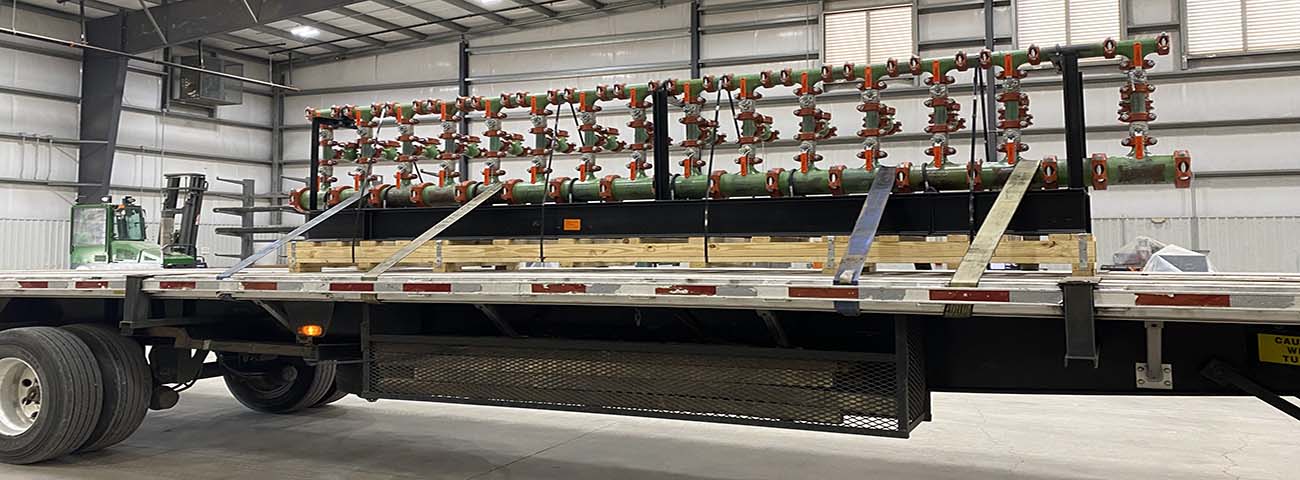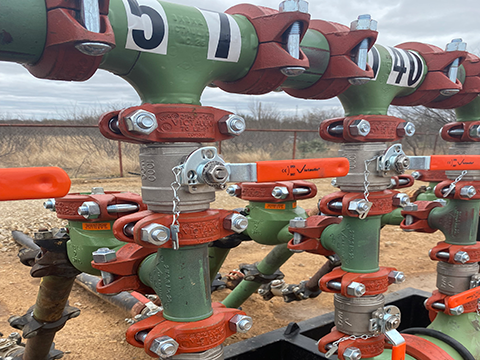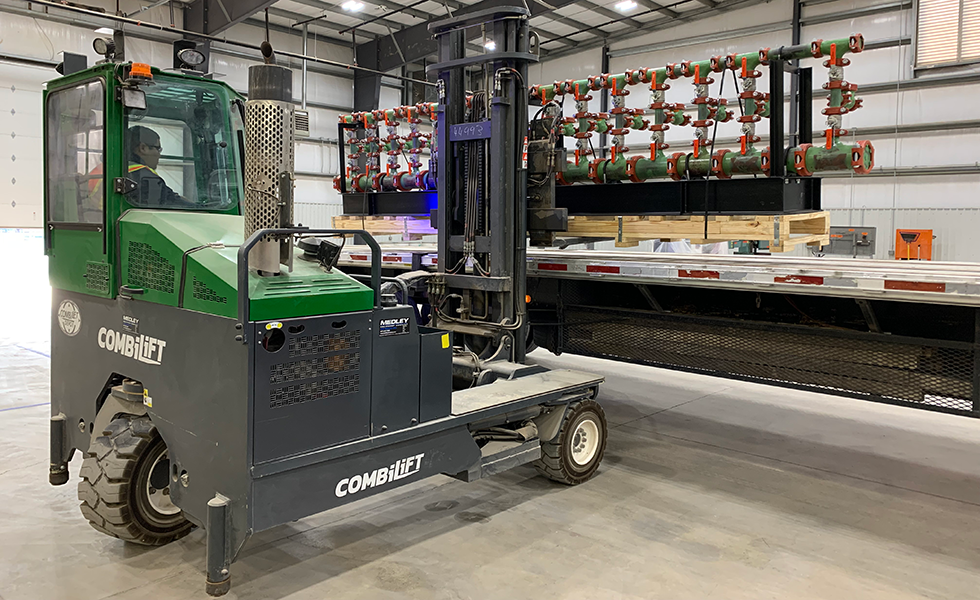Skid-mounted Gathering System Solutions for Barnett Shale

- Coordinated Delivery
- Fabrication
- Virtual Design & Construction
- Carbon Steel
- Compressed Construction Schedule
- Ease of Installation
BĀSA Resources, Inc., a Texas-based oil and gas producer, decided to upgrade its gathering system in the Barnett Shale, a resource-rich formation near the Dallas-Fort Worth metroplex. Their existing header remained in good condition after years of service, but the field superintendent wanted a new unit with additional drops to connect more wells across the oil field. BĀSA Resources approached Victaulic to design and build the new gathering system because of the durability and reliability they experienced with the original header, which also used Victaulic products, and the manufacturer’s ability to prefabricate and deliver a skid-mounted gathering system on an accelerated schedule.
Victaulic Virtual Design and Construction (VDC) designed and built the header, which included Corvel 1660 coated Style HP-70 Rigid Couplings and Series 726 Ball Valves on 3” to 6” carbon steel piping and 15 drops. The design was directly sent to Victaulic’s structural steel department where engineers calculated the specifications for a custom skid and started construction. Not only did the HP-70 couplings meet BĀSA’s high-pressure and corrosion-resistant technical requirements, but the 726 valves also allow the oil and gas producer to manually activate or isolate individual drops depending on their needs and maintenance schedule.
Victaulic’s fully vertically integrated solutions permitted the manufacturer to present lead times two to three weeks faster than competitors for the skid-mounted header’s construction, while the ease of installation reduced the workload of pumpers onsite. The installation was completed in only four hours by two pumpers, minimizing risk as well as freeing up resources that allowed BĀSA to send workers to additional job sites.




